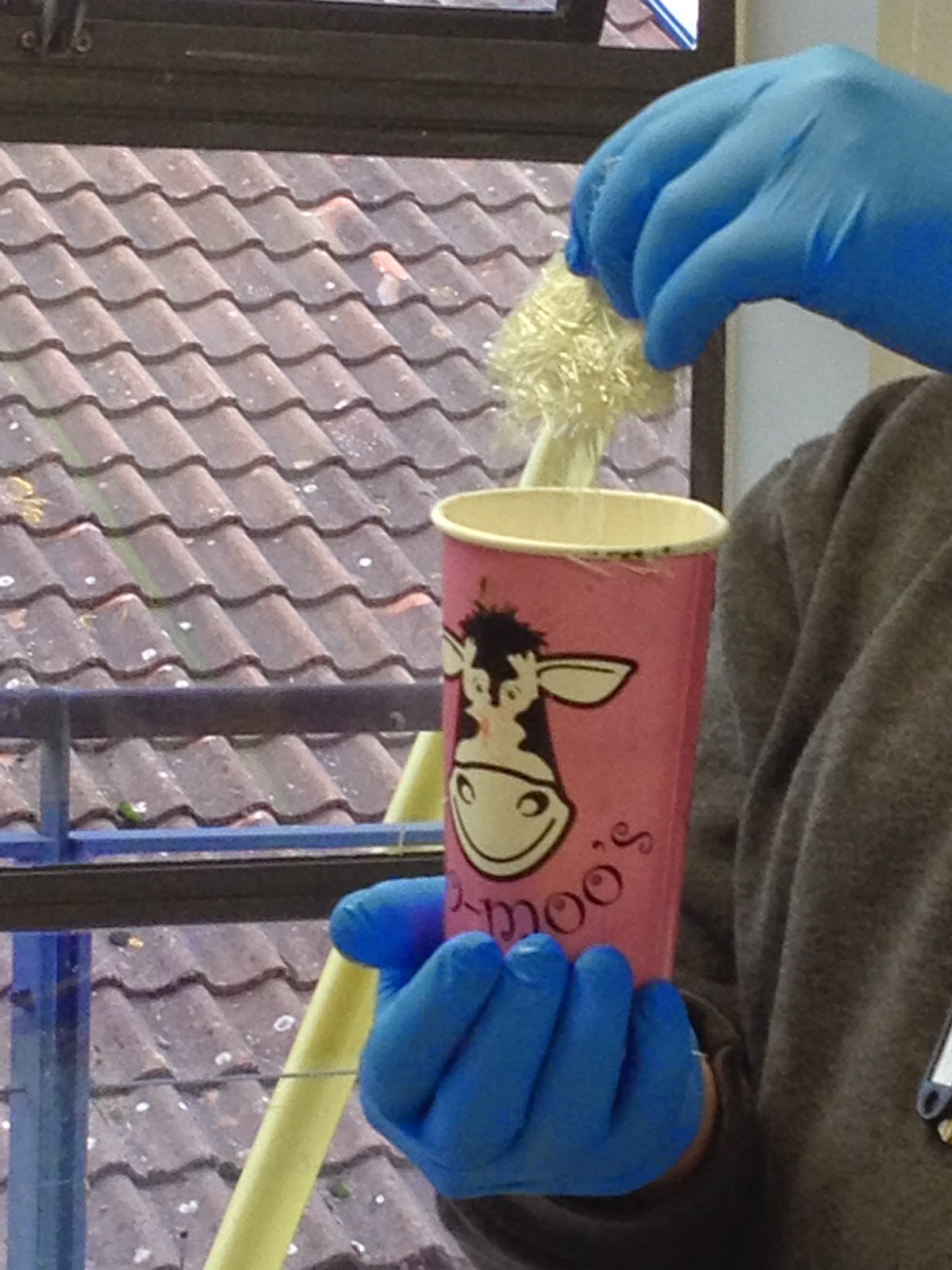- It is not as strong and stiff as carbon fiber but it's less brittle.
Health and Safety:
- Will irritate eyes, skin and respiratory system
- Potential dysphea, sore throat, hoarseness and coughing
- Safe to manufacture but have to wear protective clothing
- Mouth protection needs to filter against organic vapor (respirator)
- Hand protection (vinyl or nitrite gloves)
- Eye protection (any sort of goggles)
- Protective Clothing (baggy clothes so that it's away from skin if spills or overalls)
Materials:
- glass matting
- gel coat resin
- lay-up resin
- fine surface tissue
- catalyst (benzoyl peroxide)
Gel Coat = smooth, hard polyester surface coating of fiberglass stucture
Lay-up Resin = Synthetic Resin that undergoes polymerization during curing. Excellent adhesive, high strength, good chemical resistance.
Catalyst = methyl, ethyl, ketone peroxide
Glossary of terms:
- Core = thing sculpting onto (positive portion of a multipiece mold)
- Mould = the thing on top of the sculpt
- Cast = thing that comes out
- Flashing = excess material
- Touchdown = mould touching core
- Key = indentation to help alignment of mould
- Cutting edge = part of the mold that touches and glues thin edge
- Undercut = sculpting that creates a locking state between mould and core
Fiberglass:
- Gel coat is the first layer that goes on
- Laminating resin is a lot thinner and runnier than gel
- Chippings = little bits of fiberglass
- Vale = thin and papery fiberglass
- Catalyst is generally 2% of total volume (but can be different depending on atmosphere conditions) same for gel coat and laminating resin.
- Put mold release over plastic areas of core
- Talc the surface of the sculpt (prevents resin from building up)
- Add 2% of catalyst to gel coat layer (should change colour)
- With chip brush put an even layer of gel coat over entire sculpt and flashing and down onto core.
- Let almost cure (firm but tacky) usually takes 20-30 minutes (depends on room temperature
- Put 2% of catalyst in laminating resin
- Mix some resin with chipping and fill any deep holes that will be hard to fiberglass ( tight corners, flashing etc.)
- Wet up fiberglass chunks with resin.
- Lay over the sculpt, overlapping the pieces
- Use resin on the brush to put on top of fiberglass (knocking out airbubbles)
- Do 2 layers of fiberglass and a third round the edge for strength to pull apart.
- Lay the veil over the top and press down with resin
- Leave for a few hours to set and harden (preferably overnight)












No comments:
Post a Comment